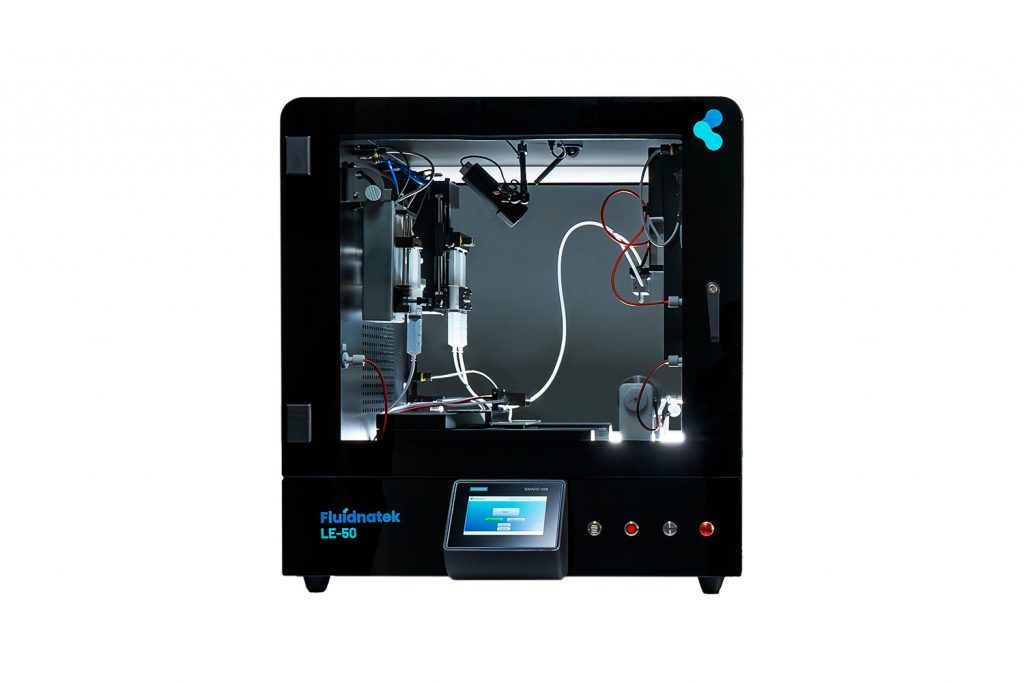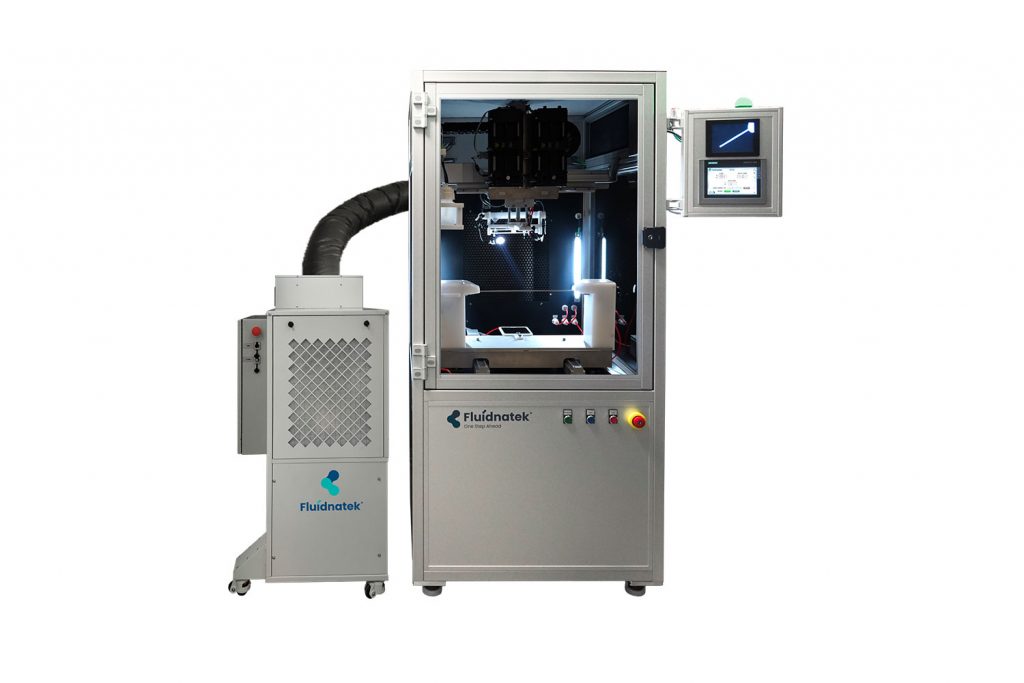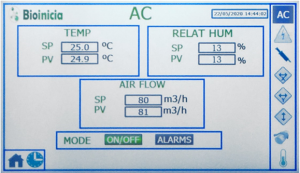Over the past decade, the emergence and evolution of electrospinning and electrospraying manufacturing techniques have accelerated the development of various applications including tissue engineering, drug delivery, filtration, and energy storage. Both electrospinning and electrospraying have grown in popularity because of many specific advantages over more traditional manufacturing technologies. These include the use of a wide selection of materials, highly controllable nano-scale fiber/particle diameter (typically 20 nm to 10 µm), the ability to encapsulate active ingredients, targeted fiber/particle orientation, controlled porosity, and scalability.
One challenge facing the electrospinning and electrospraying community has been the persistence of ‘home-built’ systems. These home-built systems not only lack safety features, like toxic solvents exposure and removal, but also lack critical environmental controls for reproducible sample output. Specifically, the lack of fine control over the temperature (T) and relative humidity (RH) within the deposition chamber of these home-built systems hinders lab-to-lab comparison for research and development and, ultimately, the potential scalability of the technology. This article will demonstrate the benefits of investing in a proper environmentally-controlled electrospraying or electrospinning commercial system via the Fluidnatek systems powered by Bioinicia.
Why is control of temperature and relative humidity crucial for electrospinning and electrospraying?
The most important reason for properly controlling T and RH during fiber/particle deposition is the significant impact these parameters have on the solvent evaporation rate of the precursor solution during processing. Controlling this evaporation rate will lead to a more stable Taylor cone during deposition, which results in more consistent and defect-free fiber/particle deposition.
Figure 1 shows how the behavior of a polycaprolactone solution is influenced when electrospinning in dry conditions where T and RH cannot be controlled. Solvent evaporation is affected, causing the solution to dry quickly, which prevents stable Taylor cone formation. The associated microstructure shows defects, circled in red, that affect sample performance. On the other hand, once T and RH are tightly controlled for this deposition, the electrospinning process is stable over time. This provides a stable Taylor cone during development, resulting in a defect free and uniform microstructure.
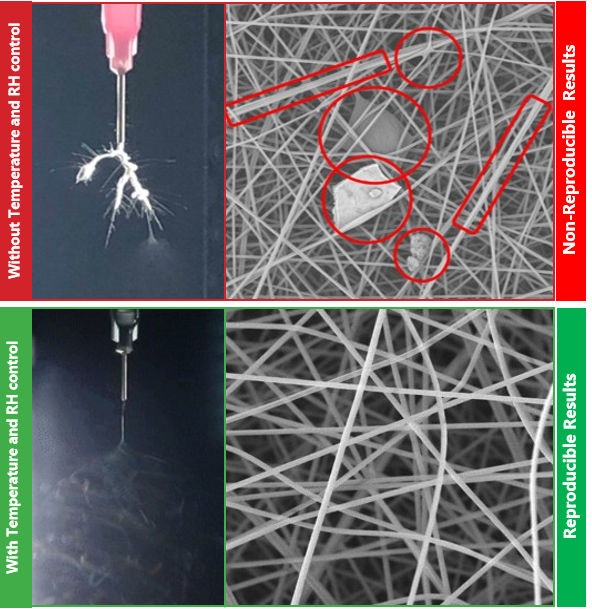
Figure 1. Electrospinning stability with and without tight conditioning of T and RH, along with the respective microstructures.
Control over relative humidity is also important as it influences charge dissipation during processing, a feature that also helps prevent microstructure imperfections. Ultimately, control over RH and T can help prevent the formation of four specific defect types for electrospinning (Figure 2): beading, fiber bundles, fiber-fiber bonding, or a mixture of these three defects. Particle uniformity and lack of agglomeration can also be achieved during electrospraying when tightly controlling these two parameters. Obtaining a defect free microstructure will assure performance and reproducible results for its intended application—something not commonly seen with home-built units.
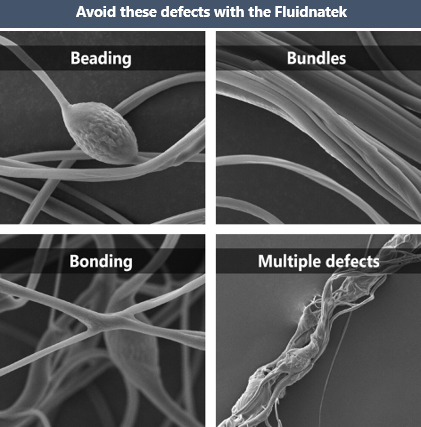
Figure 2. Typical electrospinning sample defects when T and RH are not controlled affecting overall product properties.
Advantages of T and RH conditioning
- Avoid needle clogging when low boiling point solvents are used
- Better sample reproducibility and batch-to-batch consistency
- Produce defect-free sample
- Increase sample throughput
- Scalability with multi-needle systems
Environmental Control with the Fluidnatek
The environmental control unit (ECU), exclusively designed for the Fluidnatek, offers full control over environmental conditions. Desired conditions can be preset to specific set points (SP) in the touchscreen panel (Figure 3). Air from the room is conditioned inside the ECU to humidify, dry, heat and/or cool depending on application needs. The integrated HEPA filter maintains processing conditions under ISO-7 cleanliness standards. Conditioned air is constantly monitored by measuring present value (PV), providing constant control over temperature, relative humidity, and air flow to maintain tight conditions during production. The operational ranges of the ECU are 18-45°C (±1°C), 10-80% (±5%) relative humidity, and air flow 90-180 m3/h.
Figure 3. Fluidnatek LE-50 and Fluidnatek LE-100 BioTubing with their associated ECUs, and how the environmental conditions are controlled from the touchscreen panel.
Increase Electrospinning/Electrospraying Throughput by Optimizing Temperature and Relative Humidity
Control over temperature and relative humidity become especially crucial during production scale up. Multi-needle electrospinning/electrospraying systems (5 to 5,000+ needles) increase production throughput by covering a larger area in the same amount of time. However, multi-needle systems also greatly increase the need for efficient solvent removal, part of the reason why air flow control is provided in the Fluidnatek’s ECU. If an electrospun or electrosprayed product requiring FDA, ISO or GMP clearance is needed, T and RH will need tight definition to maintain the necessary reproducibility.
Solution spinnability and production can also be improved by increasing the temperature in the deposition chamber. This ability is not commonly available on home-built units, making the availability and use of the Fluidnatek’s ECU crucial. For example, Figure 4 shows that by optimizing electrospinning parameters via control over T and RH, production throughput can be increased four times while providing uniform fiber diameters throughout the sample. This is important for various applications, especially for filtration purposes where a large grams per square meter (gsm) is typically desired.
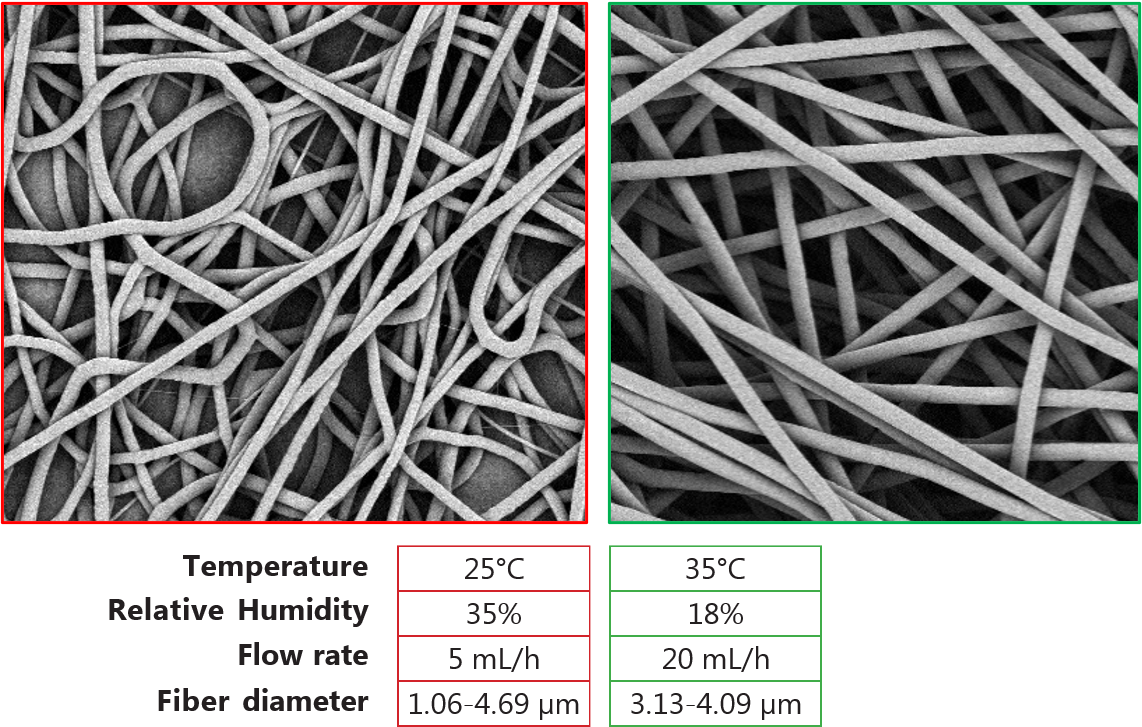
Figure 4. Throughput and fiber morphology optimization by improving environmental conditions during sample development.
Electrospinning with the Fluidnatek: The Future of Emerging Applications is in Your Hands
The Fluidnatek systems (benchtop to industrial production) allow for precise control of fiber and/or particle dimensions via tight environmental conditioning during sample production. All units are scalable, which allows process conditions from benchtop experiments to be scaled up to plant-level production. As an example, Fluidnatek systems were recently used to produce over 83 million personal protective face masks, over the course of a year, to fight the Covid-19 pandemic. This ability was in large part due to the tightly controlled temperature and relative humidity to allow for consistency and reproducibility of the final product. Such features, along with the capacity to be customized and engineered to user specifications, make the Fluidnatek the ideal equipment to fulfill your electrospinning and electrospraying application needs.

